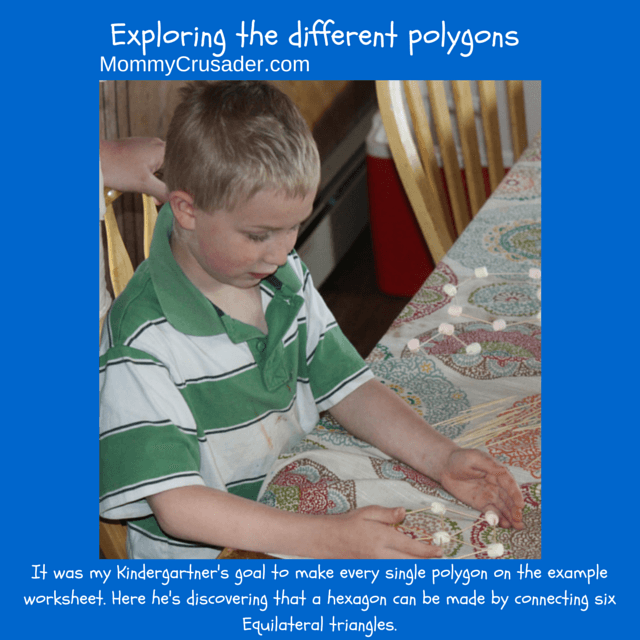Our final activity in our letter G preschool unit is G is for Geometry. We spent an hour exploring regular and irregular polygons. My older children had their minds blown when I showed them an irregular pentagon, hexagon, and dodecagon. We also talked about how mathematicians stop using the names for polygons after dodecagon and instead use “N-gon” with “N” meaning any number. For the rest of the day my children ran around saying 13-gon, 20-gon, and 100-gon. But then, my ever vigilant math teacher of a husband told us that 1000-gon actually had a name – chiliagon.
Objective 1: Introduce children to the concept of regular and irregular polygons.
Objective 2: Introduce children to the concept of concave and convex polygons.
Vocabulary:
Regular Polygon – a multi-sided shape where all edges are congruent and all interior angles are congruent.
Edge – the line segment connecting two vertices.
Vertex – the point where two line segments join.
Convex Polygon – a polygon where all interior angles are less than 180 degrees, and a line drawn through any point of the polygon will cross no more than two edges.
Concave Polygon – a polygon where one or more interior angles are greater than 180 degrees and a line can be drawn through the polygon that will cross more than two line segments.
Materials:
One copy of the polygon example worksheet, available here.
One box of round toothpicks
One bag of mini-marshmallows
Procedure:
Begin by showing the children the polygon example pages, both regular and irregular polygons. Talk with the children about what makes a polygon a regular polygon; what makes an irregular polygon; and the other vocabulary words listed in this lesson.
Next, have the children pick a polygon to make. Explain that the edges are the toothpicks and the vertices are the marshmallows.
Finally, let the children explore the creation of regular polygons for 15 or so minutes. Let the children enjoy this time. Celebrate each polygon they create, name it, and talk about the number of edges and vertices the shapes have.

Now comes the fun part.
Create a regular pentagon out of the toothpicks and marshmallows. Now create an irregular pentagon.
Ask the children which shape is a pentagon. Have them explain why they think that they are right. More than likely the children will all explain that the regular pentagon is the pentagon because it has five vertices and five edges. With that explanation in mind, have the children count the number of edges and vertices of the irregular pentagon.
Explain again the definition of an irregular polygon.
Now let the children have fun creating irregular polygons.
After everyone has had a chance to create as many shapes as they would like, let the children eat the rest of the marshmallows as part of snack time.
We had a lot of fun creating the polygons and learning new properties about polygons. My Kindergartner discovered that a hexagon could be created by placing six equilateral triangles around a point. My fourth grader discovered that if all the sides of the polygons are equal, then they will will all fit inside each other as they decrease in size by one side.
This activity was developed in collaboration with a highly qualified math teacher (my husband).




